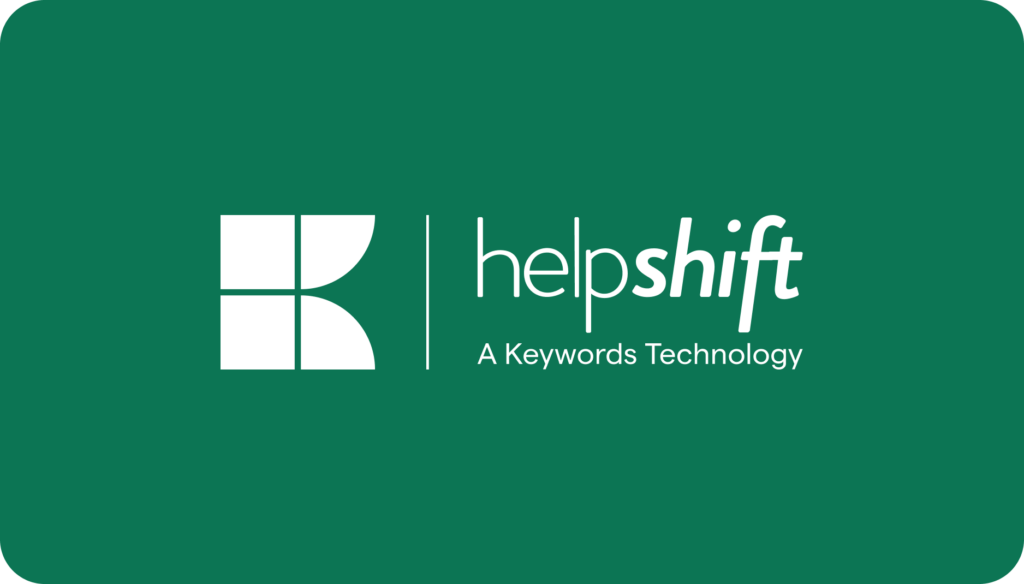Mobile app developers and marketers encounter various challenges along the way of making their app go viral. Increasing user acquisition rates, improving user experience, and working on marketing automation are only a small part of an effective app marketing plan. In this article, we are going to find out what is user engagement, what are the most important user engagement metrics, and how to improve them.
What is user engagement?
User engagement means the active interaction of a user with an app. For this, you have to make sure you provide your users with a reason to keep coming back to your app. Increasing user engagement is one of the key goals in mobile marketing that you can achieve through measures such as content personalization, email marketing, and other marketing campaigns.
It is not easy to attract the attention of users. An enormous number of apps in the app stores have weakened customer loyalty. This is why it is important to encourage user engagement because customers who have had a positive user experience are more willing to come back. And exactly these users will be more eager to recommend your app to their friends, thus, boosting your user acquisition rates.
Types of user engagement
We can define the following types of user engagement:
- Active engagement. As the name suggests, this type of engagement deals with the most active users who are happy to provide feedback, make improvement suggestions, and request new features.
- Contextual engagement. This refers to analyzing the user behaviour within your app and then making individual offers based on that behaviour. For example, e-commerce stores can analyze the purchase history and offer similar products with a discount.
- Engagement of convenience. This type of engagement is about making the user’s life more convenient. Any interaction that increases convenience also allows the company to better understand each user’s individual needs and use this understanding to reinforce the desire to buy.
- Emotional engagement. This type of user engagement is the most difficult one. It works with emotions associated with owning a product, and it is quite hard to measure and modify a human emotion.
Role of user engagement
The key role of user engagement is to grow a base of satisfied customers who become loyal brand advocates, helping the company grow in the competitive market and boost sales.
Therefore, the key task of a successful user engagement strategy is to build strong relationships with users by understanding how they interact with the product. The process involves various communication channels to improve satisfaction and proactively nurture your user base. A successful strategy is measurable and responsive to customer needs, allowing you to easily collect relevant user data.
An efficient user engagement strategy helps the business to:
- Establish long-lasting relationships between the users and the company, thus improving customer loyalty.
- Stay ahead of the competition by providing an excellent user experience.
- Increase revenue and make this revenue predictable.
How to measure user engagement?
User engagement metrics are the rates of app success among the audience, which are critical for all apps and games. The more users your app has and the more interesting it is to them, the more opportunities to profit from both sales and advertising. These metrics are as follows:
Number of Downloads
This is the simplest indicator of app success. The data for this metric is available from the app store. If the number of downloads is unsatisfactory, you should think about ASO (App Store Optimization). If you know the number of installs and watch the trend, you can understand how effective your marketing is.
But you shouldn’t rely only on the number of downloads alone. It is much more important to get a thousand quality customers than ten thousand of those who just install and immediately uninstall the app.
Open Rate
This is the percentage of users who launched your app after installing it. It is a useful metric for A/B testing. You can get reports on this metric from the app stores.
Bounce Rate
The number of users who install your app, but do not register with it. This user engagement metric is important for identifying connectivity problems for your app on certain devices or in certain countries, as well as for identifying other critical issues that hinder new users.
If you find out that many users are dropping the app before signing up for it, you should try to reduce the number of screens or simplify the registration process.
Active Users
This is one of the most interesting and useful metrics. The more customers have not only installed the app but also continue using it regularly, the higher its value.
Active users are typically divided into three groups – the daily, monthly, and weekly active users (DAU, WAU, and MAU).
You can use these user engagement metrics for different purposes. For example, DAU is useful for understanding which days are most successful and how many active, most valuable users you have. And MAU helps you understand how many users visit your app periodically.
Sticky Factor
This metric shows how “sticky” your app is. To get the value for the sticky factor, divide DAU by MAU (or DAU by WAU). If all users launch it every day, then DAU will be equal to WAU and MAU, and the sticky factor will be 100%. The 100% value of the indicator is, of course, almost unreachable.
The lower the sticky factor, the fewer users are “stuck” on your app and the less they are interested in it. A good monthly value is 20%. If your sticky factor is 5% or below, you should try push notifications or update the app with new features. Help users remember that your app exists and give them an extra reason to come back.
Average Session Length (ASL)
This is the amount of time that the users typically spend in the app. It can be very helpful when evaluating different user groups. Maybe some people open your app every day, but just for a couple of minutes, whereas someone spends three hours in it, but only once a week? Which of these groups pays the best, which one should be involved, and which one is better to target when releasing updates?
To calculate the average session length, use the formula: ASL = T / N. T is the total duration of sessions for a period, and N is the total number of sessions for the same period. However, you shouldn’t chase the value of this metric, because it strongly depends on the type of your app. For games, ASL is quite critical, but for widgets and fitness trackers it is almost irrelevant because they can run in the background.
8 Ways to Improve User Engagement
Here’s how you can increase engagement metrics:
1. Simple Onboarding Experience
App onboarding introduces the user to a product. It not only teaches how to work with the new interface, but also helps to customize it. App developers can use onboarding not only at the first launch but also when adding new functions to the app – this can also increase user engagement.
There are the following basic rules of onboarding:
- Avoid too much text. Don’t show the user too much information. Focus on the most important features of the app, and then invite the user to register or enter the app.
- Visualize content. Often people don’t like to read the text, so visualize what is written on each slide. And the best way is to use interactivity. Thanks to this, the user can learn the gestures, which will greatly simplify their further work with the app.
- Carefully present the login screen. Try to simplify registration by logging in via social media. Better yet, reward the user with additional functionality after registration.
- Don’t be too salesy. Talk to the user as if they were your friend.
- Give users an opportunity to close the tutorial. People often don’t have time to learn all of your cool stuff. Therefore, it is better to allow them to skip training.
- Do not hurry. Avoid overloading the user with lots of information from the very beginning. Does it take the user some time to learn all of the app’s functionality? If yes, then you can hide advanced features from beginner users and explain them a bit later, when a beginner becomes an “expert” in your app.
2. Deep Linking
Deep linking is one of the best ways to re-engage app users. For example, if your app has a high bounce rate, you can retarget users who did not finish the registration process. Here’s how it works:
- You send a user an email or a notification with a deep link.
- The link’s resource determines the user’s operating system.
- The link then leads the user to a specific screen offering a more personalized signup process (possibly with additional promotions or discounts).
This is a simple and relatively inexpensive way to get more users involved in your app.
3. Push Notifications and In-App Messaging
First, push notifications remind users that they have such an app on their device. Secondly, they greatly simplify the work with the product and save the users’ time. It is especially important to use such notifications in apps that perform specific functions and are not used on a daily basis. So, by sending a push message about a new discount or service, you provide customers with a good reason to use the product again and again.
If implemented correctly, push notifications can also help promote app usage by targeting messages based on behavioural data and preferences. Well-designed push messages can more than double the user return rate for the periods of 30, 60, and 90 days. Make sure you have a tool that helps you optimize push notifications and other user engagement processes. For your convenience, we created a selection of the best options available on the market.
As this technology belongs to marketing methods, there are certain recommendations for its use. The main one is to keep the balance between constructive dialogue and intrusiveness. Consider the following factors:
- Target audience. Only personalization and consideration of the user’s interests can increase sales and help achieve other business goals. In push notifications, it is possible to customize this personalization, taking into account the gender, age, and other characteristics of the user.
- Relevance. Provide users only with up-to-date information. Promotions, discounts, news – all this should be relevant.
- Different formats. Feel free to experiment with formats. According to Business of Apps, notifications with emoji, pictures, or animation can drive engagement rates up to 25%.
- Geolocation. An important parameter on which, as you know, most advertising campaigns are built. You can enter text with the name of a region in push notifications, defining this region through the user’s IP address. For more accurate geo-targeting, you can invite the user to specify a city or region themselves.
- Segmentation and localization. On average, segmented push notifications, as well as localized ones (by geotargeting), can increase the CTR by almost twice.
- Linking to social networks. The user must have an opportunity to share information. Social tools are the best option for this.
- Timeliness. People should be notified when it suits them. Almost no one will be interested in information about discounts at 3 a.m. It is best to send information on weekdays after lunch.
- The ability to unsubscribe. If a person is not interested in your notifications, they will ignore them and will not become a client anyway. Do not be intrusive, give people freedom of choice.
Read more : Push Notifications vs. In-App Messaging
4. Mobile Marketing Automation
Here are some frightening statistics: as per the study by Paychex, a leading payroll service company, marketing and advertising professionals are stressed 80% of the workweek. Luckily, mobile marketing automation can help optimize their work schedule and even reduce stress levels.
Marketing automation refers to the use of software and web services to automate various marketing processes, mainly working with clients – leading them along the funnel. The purpose of marketing automation is to build the most powerful communication with potential customers, boost user engagement, and grow sales. Automation allows you to:
- increase the efficiency of processes in comparison with manual work
- automate repetitive tasks
- and the most interesting point: start new processes that would be impossible manually.
5. In-App Communities
Communities are social features integrated into the app that allow users to communicate with each other and exchange experiences. Having an in-app community is one of the most successful user retention and engagement tactics. This is because a feeling of belonging and competitiveness encourages the users to return to the app, knowing that their peers are waiting. Besides, having a community “humanizes” the apps – apps with many users have community managers that act as a bridge between the company and customers.
It is also possible to track the community statistics and thus see the degree of user engagement in your app. You can look at data such as page actions, page views, likes on the pages, and the reach of the post. All of this will tell you how people like your content, how much they interact with your page, and how your community grows.
6. Gamification
The term “gamification” first appeared in the early 2000s and was interpreted quite broadly: as any application of game mechanics in non-game processes. Since then, gamification has become a new and effective way to attract customers and increase business revenue. Gamification is based on viral tools that motivate users to be socially active and encourage them to attract their friends and acquaintances, and at the same time spend money. In this way, gamification turns the consumption of a service or product (e.g., a mobile app) into a game. And the game has always been a successful user engagement tool.
The introduction of gaming techniques into a marketing strategy allows you to solve several problems.
- First, the game elements attract new users and return those who have already used your app. The game allows you to grab the user’s attention and make them spend as much time as possible in the app.
- Secondly, app gamification helps establish two-way communication between the company and the target audience as well as track feedback.
- Third, the introduction of game elements leads to an increase in the company’s income. Due to retention, the user will spend more time in the app, see more ads, and is more likely to make an in-app purchase.
Additionally, the implementation of game mechanics is a perfect way to create a user engagement loop. An engagement loop consists of actions that users do repeatedly when they are fully engaged with your app. According to the game theory, there are the following stages of this loop:
- Motivation. It is important to give the user the right motivation for interaction with the app. According to psychologists, the most effective motivators are the desire to enjoy and the desire to get rid of discomfort.
- Surprise and encouragement. Any user will enjoy pleasant surprises. Having received some bonus content, a special reward or new opportunities for themselves, they won’t miss the opportunity to complete an additional task or continue the contest.
- Reward. The reward must increase the status of the user. App developers often choose physical products as a reward. But in this case, the marketers must clearly understand that the value of this product is really worth the effort spent by the participants to win the competition. Otherwise, there won’t be too many people willing to participate in it.
Read more: Gamification Examples
7. Personalization of Content
Content personalization is another important aspect of user engagement. The more the content meets the needs and preferences of the user, the more likely they are to continue using the product. You can start small – for example, display the user’s name on the screen and in push notifications. This is called dynamic content. However, in the long run, this won’t be enough: it’s important to tailor the proposed content to the location and needs of users. This is called event-driven automation. The Duolingo language learning app is a perfect example of such a practice. They tailor their onboarding funnels to users with different experiences in mastering a new language.
8. Asking for Reviews
Feedback from real users offers you a perfect opportunity to correct your mistakes and identify growth points. Therefore, it is crucial that you ask your app users to review your app. You can do that via in-app messaging or surveys for active users and via push notifications for passive users. Another method to gather feedback is by using a dynamic QR code generator to create a QR code that links to a feedback form. This QR code can be sent via email, and users can easily scan it using their smartphones to access and fill out the feedback form.
When asking the user about their experience, be more specific. Ask for feedback after they carry out some targeted action within your app. For example, complete a level, download content, or make a purchase.
It’s important for people to understand that their feedback can help improve the product. Another advantage of this strategy is that the users are unlikely to post negative reviews about your product if they have an opportunity to contact you directly and resolve the issue.
Wrapping Up
To increase user engagement with your app, make sure to implement the strategies discussed in this article and remember that what might work for one app won’t necessarily bring the same results to yours. That’s why it’s important to experiment and find out what works best for your product. If you’d like to learn more about various app marketing strategies, subscribe to our free trial!



